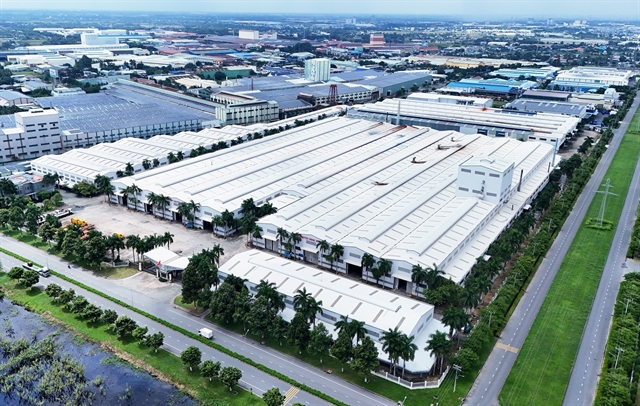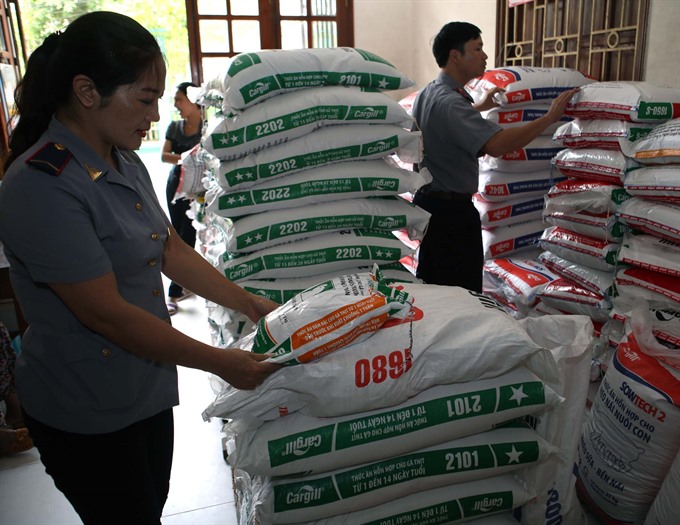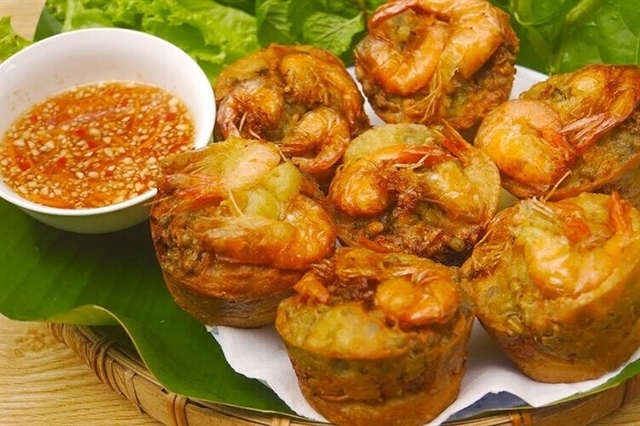 Economy
Economy

While animal feed plays a decisive role in a profitable and sustainable husbandry sector, many shortcomings remained in the management of the materials used and the quality of the feed being used in Viet Nam, experts said.
 |
| Inspectors check animal feed at a veterinary medicine shop in Thái Bình Province.— VNA/VNS Photo Vũ Sinh |
HÀ NỘI — While animal feed plays a decisive role in a profitable and sustainable husbandry sector, many shortcomings remained in the management of the materials used and the quality of the feed being used in Viet Nam, experts said.
Nguyễn Thanh Sơn, director of National Institute of Animal Sciences, acknowledged that the supervision of animal feed facilities remained lax.
“Not enough test samples are taken and small traders have taken advantage of this to mix in other ingredients before they sell it ,” he told Nông thôn Ngày Nay (Countryside Today) newspaper.
Sơn also said some unauthorised firms were selling materials to animal feed plants.
Feed is the most important aspect of the livestock industry and takes up a significant cost, but farmers seem to be the only ones that suffer the consequences.
Phạm Văn Thương, a breeder from Ninh Bình Province, said the main thing he looked at when buying animal feed was price.
“Like other farmers, we rely heavily on animal feed suppliers. If deliveries are delayed, we don’t care if the quality meets the standards printed on the labels or not,” he said.
Phạm Thị Mùi, who owns a pork farm in the northern province of Hà Nam, said animal feed was proving to be a production problem.
“Animal feed accounts for 70 per cent of our production costs, and we can’t make a profit if the price of one kilo of pork falls lower than VNĐ40,000,” she said.
According to the Ministry of Agriculture and Rural Development (MARD), the country’s feed industry relies heavily on imported ingredients. Each year, Việt Nam spends about $3 billion on animal feed and material imports.
Statistics from the General Department of Vietnam Customs showed that Việt Nam’s import value for animal feed and materials for producing animal feed stood at US$1.8 billion in the first half of 2018, a year-on-year increase of 12.96 per cent.
Trần Xuân Định, deputy head of MARD’s Department of Crop Production, said Việt Nam could only supply 40 per cent of materials for the animal feed industry, adding available ingredients including rice bran and cassava.
He attributed the situation to low productivity and the fact that many farmers weren’t willing to join the supply chain.
As a result, the price of animal feed in the country was 15-20 per cent higher than other countries in the region, affecting competitiveness, he said.
Đặng Kim Sơn, former director of the Institute of Policy and Strategy for Agriculture and Rural Development, said due to this reliance on imported ingredients, farmers’ profits were very small. Most of the profits were in the hands of big players – enterprises which imported and exported animal feed, especially foreign-invested firms.
Solutions
To enhance the quality of animal feed, Lê Bá Lịch, chairman of the Animal Husbandry Association, said authorities should regularly check samples to detect violations and deal with them.
Lịch also stressed the need to strengthen awareness among animal feed enterprises, traders and breeders to stop them using forbidden substances and low quality materials.
Nguyễn Xuân Dương, acting director of MARD’s Department of Livestock Production, said the development of the animal feed industry had surpassed the ministry’s plan.
The local capacity of registered factories had reached over 31 million tonnes, far exceeding the target for 2020 of 25 million tonnes.
Dương said in the long run, localities should review and restrict the opening of new industrial animal feed processing units. — VNS




